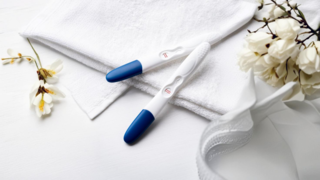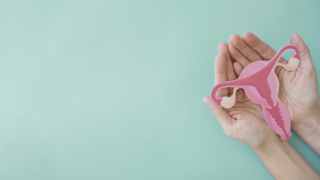In this article:
Your womb is your baby’s first classroom. Let’s walk through what your little one is already experiencing, long before their first cry.
Touch: The First Sense to Arrive
Touch is the very first sense to begin forming in the womb.- Around 8 weeks, babies start developing their sense of touch, right on the lips and nose.
- By 12 weeks, tiny touch receptors begin forming on your baby’s palms and soles, helping them connect with the world, even before birth.
- By 17 weeks, sensitivity has expanded to the abdomen, laying the foundation for the sense of touch even before birth.
However, while the body begins detecting sensation early, the brain’s ability to process pain does not fully form until around 30 weeks. As your baby’s nervous system matures, they gradually become able to feel things like touch, warmth, and pressure throughout their body.
This explains why late third-trimester babies often respond to gentle pokes or shifts in maternal movement.
Sight: Babies Can See Light in the Womb
Even though the womb is dark, light does make its way through. Human skin lets in a soft, filtered glow, enough for the developing foetus to notice.- Around the third trimester, babies begin reacting to light patterns
- Studies have shown they track red dot patterns shaped like faces
- This facial preference is seen even before birth
Sound: Recognising the Mother’s Voice
The sense of hearing develops significantly during pregnancy, and what your baby hears in utero may shape their preferences after birth.- Around the third trimester, your baby starts picking up on sound vibrations from the world around them.
- Research from the 1980s found that newborns preferred their mother’s voice
- Prenatal exposure to specific stories or songs can influence newborn responses
Taste and Smell: Flavours Pass Through to the Womb
Your baby doesn’t just hear what you say; they also get a taste of what you eat. Taste and smell are deeply interconnected, and both begin developing before birth.- During the third trimester, fetuses typically swallow several ounces of amniotic fluid daily as part of their development.
- Certain flavours like carrot, garlic, vanilla, mint, and anise are passed into this fluid
- Babies exposed to these flavours in utero show preferences for them after birth
What Does This Mean for You?
While most of your baby’s sensory growth continues after birth, these early experiences lay the groundwork for emotional bonding, food preferences, language development, and attachment.Understanding what your baby can sense helps you shape a more enriching prenatal environment. A loving touch can be calming for both of you.
- Talk, sing, or hum regularly to your baby
- Expose them to calming music or consistent melodies
- Eat a variety of healthy, flavourful foods
- Use gentle touch or belly rubs during relaxation
FAQs on Development of Sensory Functions In The Womb
- Can babies sense pain before birth?
Research shows that babies likely do not feel pain until after 30 weeks, when their brain’s somatosensory system is developed enough to process such signals. - Can I influence my baby’s taste preferences during pregnancy?
Yes. Studies show that exposure to certain flavours during pregnancy can influence babies’ preferences once they start eating solids. - Can my baby see light in the womb?
Yes, although limited. Foetuses can detect changes in light intensity and even track patterns, especially in the third trimester. - Do babies respond to music in utero?
They do. Regular exposure to music may calm or stimulate them, depending on the rhythm and volume. Familiar melodies may even soothe them after birth. - Does learning begin before my baby is born?
Yes, in simple and sensory ways. From recognising your voice to forming taste memories, their brain is actively processing the world around them.






